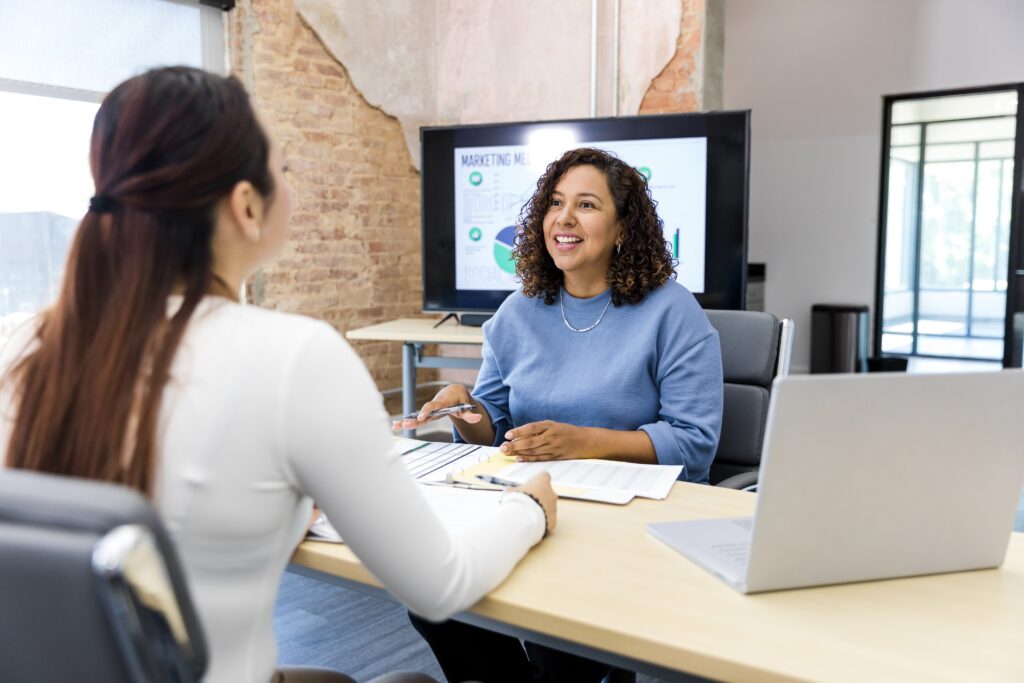If we asked you which metros in the United States had the highest wages, you’d likely say New York or San Francisco. And you’d be correct.
But if we asked you which metros had the highest wage growth (how much wages are changing on a relative percentage basis), would your answer stay the same?
Some of the hottest markets for wage growth aren’t the places you might expect.
These trends aren’t just interesting—they are metrics that HR leaders use to understand the puzzle of their hiring and compensation plans.
So, the LaborIQ team dove into our wage growth data and forecasts to find insights that might reshape your talent acquisition strategies. From wage growth in smaller metros to the stagnation in cities you’d think would be booming, we’ll provide several numbers that may surprise you and even give you an edge in your strategy.
For our analysis, we took the most populous U.S. metro areas for each state and looked at the median wage in 2015 compared to the median wage in 2023. We wanted to include each state in this article, which means states with multiple large metros (like California and Texas) had excluded cities.
A Closer Look at the Top Performers
Let’s start with the high performing markets. The Miami, FL metro area tops the list with an impressive 41.7% wage growth from 2015 to 2023. The job market is booming in Miami, and the wages show it. The steep increase was driven by a diverse economy and fueled by big gains in the financial sector.
From Miami, we head to the other side of the country. Wages in Sioux Falls, SD grew by 40.2% during the same period. In the Pacific Northwest, Portland-Vancouver-Hillsboro, OR-WA recorded 39.5% wage growth. Known for its thriving tech industry, Portland’s wage growth reflects the high demand for tech talent. Boise, ID came in fourth at 38.9%, Seattle-Tacoma-Bellevue, WA at 38.6%, and Billings, MT at 37.2%.
The Stragglers – Analyzing the Low Performers
Some metros have much more modest gains. For instance, New York-Newark-Jersey City, which is often associated with high living costs and a competitive job market, recorded a surprisingly slower wage growth of 17.9% from 2015 to 2023.
Anchorage, AK saw a moderate 19.9% growth in wages over the 8 years, with Bridgeport-Stamford-Norwalk in Connecticut at 21.0%, Charleston, WV at 25.1% and the Philadelphia-Camden-Wilmington metro, straddling Pennsylvania, New Jersey, and Delaware, at 26.3%.
These low-performing Eastern metros suggest that while the East Coast may boast some of the country’s most prominent cities, it is also home to regions where wage growth has lagged, potentially due to a combination of economic maturity, high costs of living, and out migration, all changing the landscape for talent acquisition in the region.
Regional Consistencies – Comparing the Top and Bottom Performers
When examining the top and bottom ten metros by wage growth, an interesting pattern emerges. Most of the top performers were found in the West. Miami stands out – its economic diversification, especially in technology and finance, has driven demand for skilled talent and pushed wages higher. In almost all cases, like Florida and the West, these areas have also seen significant population gains.
In contrast, low performers are concentrated in some of the country’s most prominent cities on the east coast. Metros in New York, New Jersey, Delaware, Pennsylvania, Virginia, and West Virginia illustrate a regional trend where wage growth has been comparatively sluggish. These areas, while economically significant, haven’t been able to keep wages on the pace of inflation.
How Trends Impact Your Work: High Growth Areas
The reasons for high wage growth will vary, make sure you understand why before adjusting your strategy. Here are some possibilities:
Low Unemployment Rates: When unemployment rates are low, there’s a smaller pool of available talent, driving up wages as companies compete for skilled workers.
Industry Boom: Certain industries, such as tech or healthcare, may be experiencing rapid growth which can vary by region, leading to increased demand for specialized talent and higher wages. This has been a primary driver for wages in the West.
Cost of Living Increases: As the cost of living in a metro area rises, wages may increase to keep pace with the higher expenses.
Government Policies or Incentives: Local or state governments may offer tax breaks, subsidies, or other incentives to attract businesses, leading to increased economic activity and higher wages.
Talent Shortages: Skill gaps or shortages in specific areas, such as data science or cybersecurity, can drive up wages for in-demand professionals.
Talent shortages and booming industries create stress on the worker supply. If you’re recruiting talent, you may get into pricing wars with other companies seeking to win the limited talent available. Real time wage data will be critical to guide your decision on the premium you want to place on your roles.
If possible, you will find a deeper talent pool outside of that metro. You may be able to position the high wage growth to candidates that don’t live in similar circumstances, getting them to locate to your preferred location. Or if your company allows it, lean into remote work to take advantage of markets with lower growth rates.
If that is not an option, you will have to win on compensation/benefits or a winning employer brand.
How Trends Impact Your Work: Low-Wage Growth Areas
As with high growth markets, understand the main reasons for lagging wage growth before adjusting your strategy. Here are some possibilities:
Limited Economic Growth: Low-wage growth metros may be experiencing limited economic growth, resulting in fewer job opportunities and lower wages.
High Unemployment Rates: An over supply of labor can lead to a surplus of talent, reducing the pressure on companies to offer competitive wages.
Industry Decline: Certain industries, such as manufacturing or coal mining, may be experiencing decline, leading to reduced demand for specialized talent and lower wages.
Low Cost of Living: A low cost of living in a metro area can mean that wages don’t need to be as high to maintain a comfortable standard of living.
Limited Government Investment: Local or state governments may not be investing in initiatives to attract businesses or stimulate economic growth, leading to stagnant wages.
In low-wage growth metros, you have a stronger chance of attracting and retaining top performers. You can easily stand out with an above market pay-band. Workers may also be looking for work-life balance, flexible work arrangements, and opportunities for professional growth. Budget conscientious firms may find these markets attractive. The answers here lie in your business and compensation strategy..
Data Table
Below is a sample of the wage growth gained from 2015 to 2023. Want to see the full data set? Gain full access to LaborIQ’s compensation management platform for 30 days for free. Contact our team to get your account set up.
{% module_block module “widget_8968f4dc-5e95-42f5-90ac-5aac1db7b9ca” %}{% module_attribute “child_css” is_json=”true” %}{% raw %}{}{% endraw %}{% end_module_attribute %}{% module_attribute “content” is_json=”true” %}{% raw %}”








